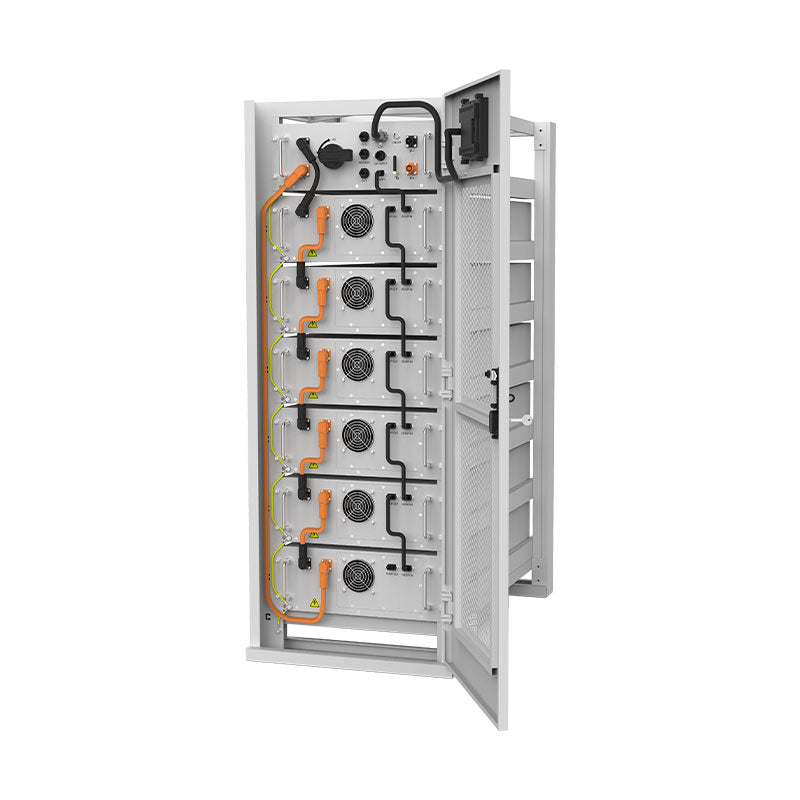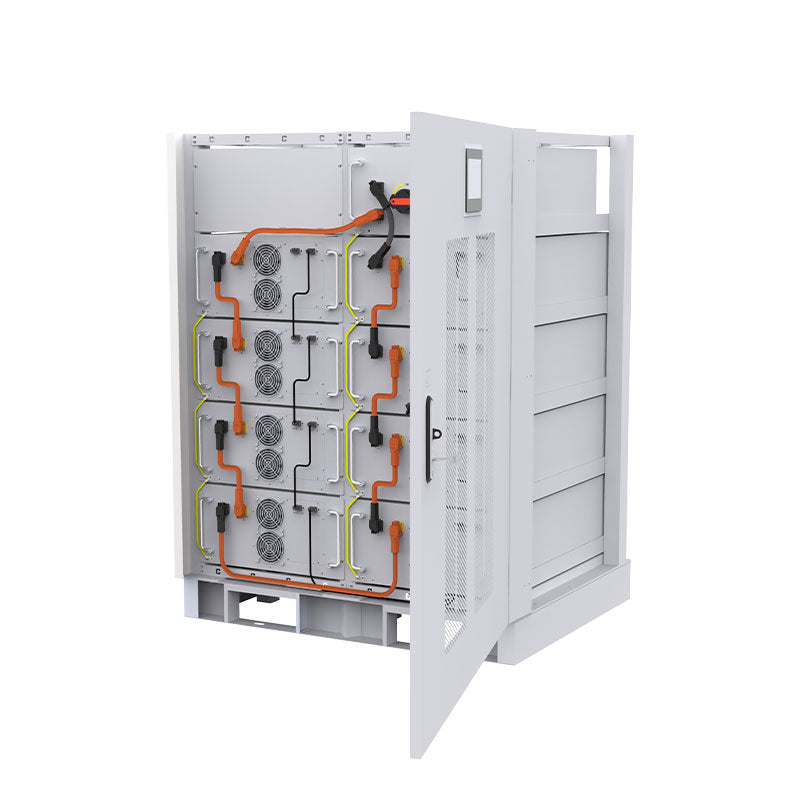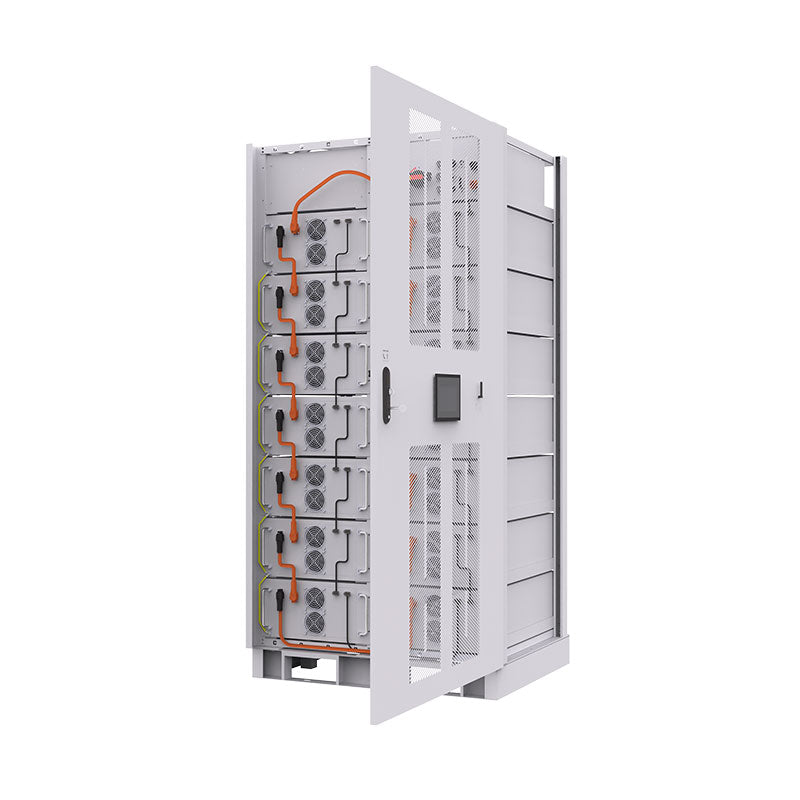Anern ESS Battery Clusters: Scalable High-Voltage LiFePO4 Solutions for C&I Energy Storage
In the commercial and industrial (C&I) sector, managing energy is managing risk and opportunity. Grid instability, fluctuating electricity rates, and the drive for sustainability demand a more intelligent power infrastructure. Anern's series of high-voltage ESS (Energy Storage System) battery clusters provides a modular, high-performance solution engineered for the specific needs of solar distributors, system integrators, and EPC contractors. These systems are the building blocks for creating resilient, cost-effective, and scalable energy storage assets.
The Engineering Foundation: LiFePO4 in a High-Voltage, Modular Design
The choice of battery technology defines the safety, lifespan, and financial return of any energy storage system. Anern’s ESS battery solutions are built on a foundation of Lithium Iron Phosphate (LiFePO4) chemistry and a sophisticated high-voltage architecture, delivering decisive advantages for C&I applications.
- Intrinsic Safety and Stability: LiFePO4 chemistry features a robust molecular structure highly resistant to thermal runaway. This inherent safety is paramount in commercial environments, safeguarding personnel and valuable assets while ensuring system reliability under demanding operational cycles.
- Extended Operational Lifespan: Designed for endurance, our battery modules are rated for over 8,000 charge-discharge cycles at 80% Depth of Discharge (DOD). For typical C&I applications like daily peak shaving or solar self-consumption, this translates to a service life of over 15 years, maximizing the project's return on investment (ROI).
- High-Voltage Architecture: The ESS battery cluster system operates at high voltage, a superior design that minimizes electrical current and dramatically reduces energy loss from resistance (I²R losses). This increases round-trip efficiency, lowers thermal stress on components, and reduces the need for costly, heavy-gauge cabling, thereby lowering the total balance-of-system costs for your projects.
ESS Battery Clusters: Intelligent and Scalable by Design
Anern ESS Battery Cluster is more than a battery—it's a standardized, rack-mounted system that integrates high-energy-density LiFePO4 modules into a compact and manageable unit. This modular philosophy is the key to its flexibility and scalability.
- Seamless Scalability: A single ESS battery cluster (e.g., 30.72kWh) can be easily paralleled with additional units to meet precise energy capacity and power output requirements. The system is engineered to support up to 16 units in parallel, allowing you to design systems that scale from small business backup to large industrial peak-shaving applications.
- Rack-Mounted for Easy Integration: The standardized, rack-based form factor simplifies logistics, reduces installation time, and streamlines on-site handling. It allows integrators to build clean, organized, and high-density energy storage blocks within server rooms or dedicated electrical closets.
- High Energy Density: Each battery module is engineered to pack maximum energy into a minimal footprint. This density is critical for installations where space is a premium, allowing you to deploy significant storage capacity without consuming valuable floor space.
Advanced BMS: The Brains of the Operation
At the heart of each ESS battery cluster is an intelligent, industrial-grade Battery Management System (BMS). The BMS acts as the central command unit, providing comprehensive monitoring, control, and protection to ensure the safety, performance, and longevity of the entire asset.
- Multi-Layer Safety Protocols: The BMS delivers real-time protection against over-voltage, under-voltage, over-current, short circuits, and high/low temperature extremes, instantly isolating the battery modules if any anomaly is detected.
- Precision Cell Balancing: It actively monitors and balances the state-of-charge of every cell across the entire cluster. This critical function prevents imbalances that lead to premature capacity fade, thereby maximizing usable energy and extending the battery's operational life.
- Seamless Technical Integration: Equipped with standard CAN and RS485 communication ports, the BMS ensures effortless, plug-and-play integration with mainstream high-voltage inverters and Power Conversion Systems (PCS). This pre-configured compatibility simplifies engineering and accelerates the commissioning process for system integrators.
FAQs about C&I BESS
Q1: How do I size a C&I BESS using the modular ESS battery clusters?
A: Sizing the system involves assessing the facility's energy needs. First, determine the target energy capacity (kWh) required for the application (e.g., hours of backup, peak demand to be shifted). Second, determine the peak power requirement (kW). You can then meet these requirements by paralleling the appropriate number of ESS battery clusters. For example, to create a ~120kWh system, you would parallel four 30.72kWh ESS battery cluster units. Our technical team can assist you in analyzing load profiles to specify the optimal configuration.
Q2: What are the ideal installation conditions for an ESS battery cluster system?
A: To ensure maximum performance and service life, ESS battery clusters must be installed in a controlled indoor environment. The ideal operating temperature is between 15°C and 30°C (59°F to 86°F). The location must be dry, clean, protected from direct sunlight, and have sufficient ventilation for heat dissipation. The rack-mounted design is intended for installation in standard electrical racks or enclosures. Adhering to these conditions is critical for project success and longevity.
Q3: How does the modular design of the ESS battery cluster benefit a system integrator?
A: The modularity offers significant advantages. 1) Simplified Logistics: Standardized, compact clusters are easier to transport, store, and handle on-site than large, monolithic cabinets. 2) Scalable Design: You can precisely match the client's budget and energy needs, with a clear upgrade path. 3) Faster Installation: The rack-mounted design and plug-and-play communication accelerate physical installation and system commissioning. 4) Improved Serviceability: In the rare event of a fault, a single module or cluster can be isolated or replaced without disabling the entire system.



